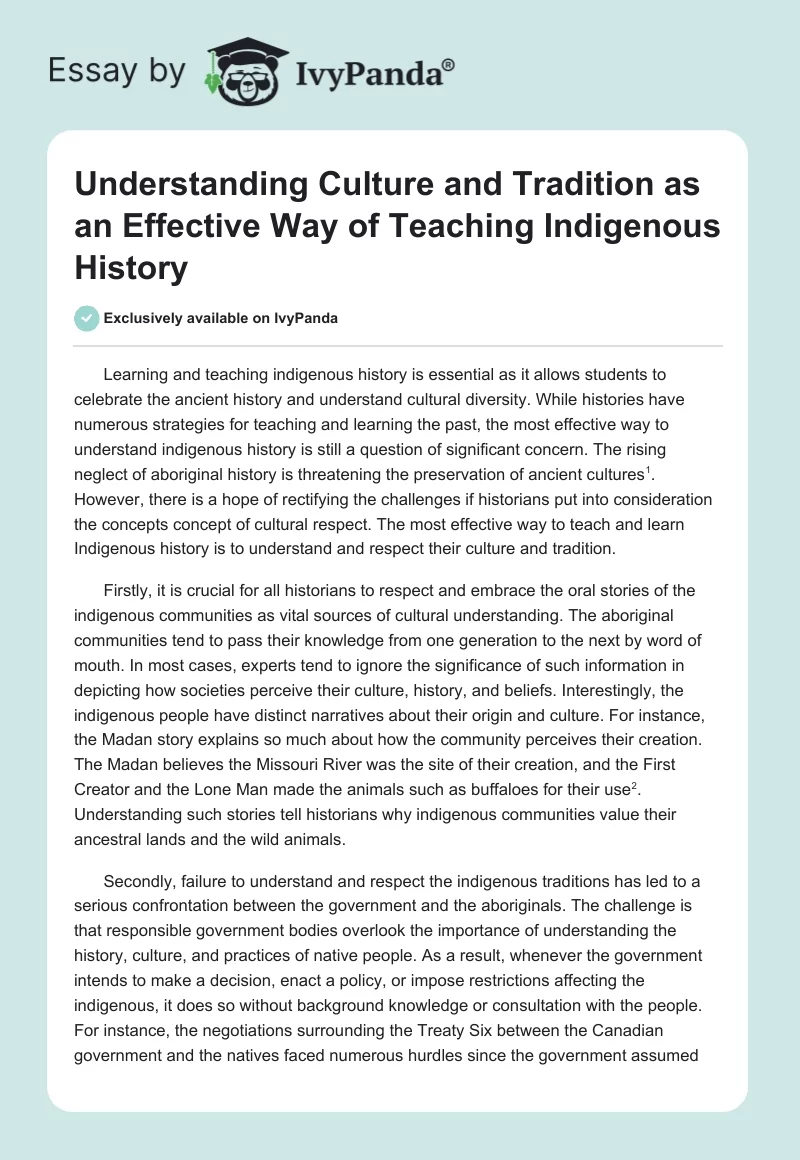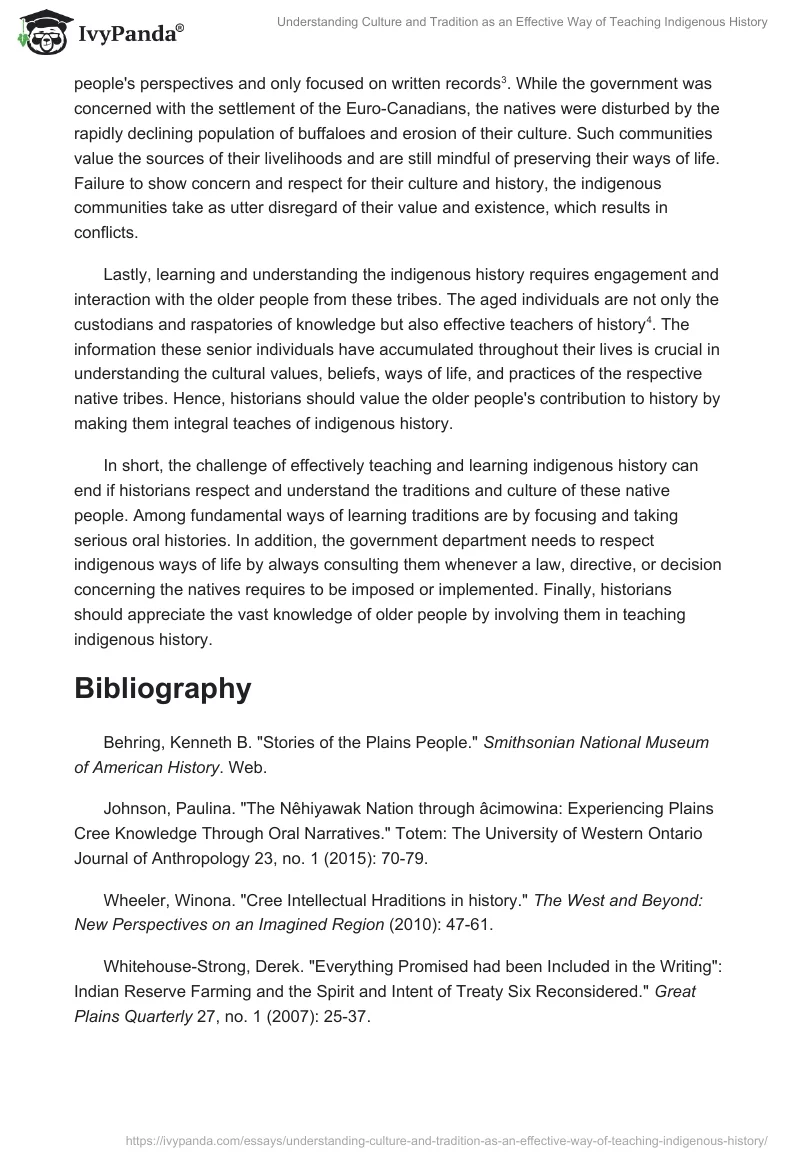Learning and teaching indigenous history is essential as it allows students to celebrate the ancient history and understand cultural diversity. While histories have numerous strategies for teaching and learning the past, the most effective way to understand indigenous history is still a question of significant concern.
The rising neglect of aboriginal history is threatening the preservation of ancient cultures. However, there is a hope of rectifying the challenges if historians put into consideration the concepts concept of cultural respect. The most effective way to teach and learn Indigenous history is to understand and respect their culture and tradition.
Firstly, it is crucial for all historians to respect and embrace the oral stories of the indigenous communities as vital sources of cultural understanding. The aboriginal communities tend to pass their knowledge from one generation to the next by word of mouth. In most cases, experts tend to ignore the significance of such information in depicting how societies perceive their culture, history, and beliefs.
Interestingly, the indigenous people have distinct narratives about their origin and culture. For instance, the Madan story explains so much about how the community perceives their creation. The Madan believes the Missouri River was the site of their creation, and the First Creator and the Lone Man made the animals such as buffaloes for their use. Understanding such stories tell historians why indigenous communities value their ancestral lands and the wild animals.
Secondly, failure to understand and respect the indigenous traditions has led to a serious confrontation between the government and the aboriginals. The challenge is that responsible government bodies overlook the importance of understanding the history, culture, and practices of native people. As a result, whenever the government intends to make a decision, enact a policy, or impose restrictions affecting the indigenous, it does so without background knowledge or consultation with the people. For instance, the negotiations surrounding the Treaty Six between the Canadian government and the natives faced numerous hurdles since the government assumed people’s perspectives and only focused on written records.
While the government was concerned with the settlement of the Euro-Canadians, the natives were disturbed by the rapidly declining population of buffaloes and erosion of their culture. Such communities value the sources of their livelihoods and are still mindful of preserving their ways of life. Failure to show concern and respect for their culture and history, the indigenous communities take as utter disregard of their value and existence, which results in conflicts.
Lastly, learning and understanding the indigenous history requires engagement and interaction with the older people from these tribes. The aged individuals are not only the custodians and raspatories of knowledge but also effective teachers of history. The information these senior individuals have accumulated throughout their lives is crucial in understanding the cultural values, beliefs, ways of life, and practices of the respective native tribes. Hence, historians should value the older people’s contribution to history by making them integral teaches of indigenous history.
In short, the challenge of effectively teaching and learning indigenous history can end if historians respect and understand the traditions and culture of these native people. Among fundamental ways of learning traditions are by focusing and taking serious oral histories. In addition, the government department needs to respect indigenous ways of life by always consulting them whenever a law, directive, or decision concerning the natives requires to be imposed or implemented. Finally, historians should appreciate the vast knowledge of older people by involving them in teaching indigenous history.
Bibliography
Behring, Kenneth B. “Stories of the Plains People.” Smithsonian National Museum of American History. Web.
Johnson, Paulina. “The Nêhiyawak Nation through âcimowina: Experiencing Plains Cree Knowledge Through Oral Narratives.” Totem: The University of Western Ontario Journal of Anthropology 23, no. 1 (2015): 70-79.
Wheeler, Winona. “Cree Intellectual Hraditions in history.” The West and Beyond: New Perspectives on an Imagined Region (2010): 47-61.
Whitehouse-Strong, Derek. “Everything Promised had been Included in the Writing”: Indian Reserve Farming and the Spirit and Intent of Treaty Six Reconsidered.” Great Plains Quarterly 27, no. 1 (2007): 25-37.


